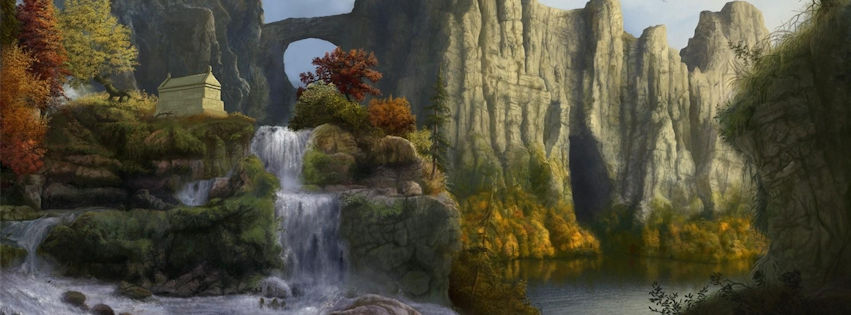The Lurking Oaks
The Lurking Oaks are ancient, sentient trees hidden deep within the heart of The Forest of Night, their twisted branches and dark, gnarled roots blending seamlessly with the shadows that permeate the forest. Unlike the peaceful, life-sustaining trees of the outer woods, the Lurking Oaks exude an unsettling presence. Their bark, a deep, almost black hue, appears still and unmoving at first glance, but upon closer inspection, one might notice subtle shifts as their branches sway with no wind, or roots creeping ever so slowly across the forest floor. They are not content to merely exist; they actively hunt, drawing in unwary travelers or creatures who venture too close to their reach.
Legends tell of their uncanny ability to sense any movement within their vicinity, reacting with lightning speed to ensnare those who stray too near. Their roots, nearly invisible beneath layers of foliage and underbrush, stretch out silently to bind the unwary, pulling them into the depths of their darkened trunks. Once captured, the victim is drawn into the tree's living bark, where it drains the life force, leaving behind only withered remains. Though their true origins are unknown, many speculate that these trees were planted by forces long forgotten, perhaps as guardians of something hidden deep within the forest or as servants to dark entities who once roamed the material plane. Whatever their purpose, one thing is certain: the Lurking Oaks are not to be trifled with.
Legends tell of their uncanny ability to sense any movement within their vicinity, reacting with lightning speed to ensnare those who stray too near. Their roots, nearly invisible beneath layers of foliage and underbrush, stretch out silently to bind the unwary, pulling them into the depths of their darkened trunks. Once captured, the victim is drawn into the tree's living bark, where it drains the life force, leaving behind only withered remains. Though their true origins are unknown, many speculate that these trees were planted by forces long forgotten, perhaps as guardians of something hidden deep within the forest or as servants to dark entities who once roamed the material plane. Whatever their purpose, one thing is certain: the Lurking Oaks are not to be trifled with.
Basic Information
Anatomy
The Lurking Oaks, while technically trees, possess a unique and terrifying anatomy that blurs the line between plant and creature. They can grow to immense sizes, with the largest individuals reaching heights of over 50 feet (15 meters), their trunks thick and gnarled, capable of spanning 15 feet (4.5 meters) in diameter at the base. Their roots extend deep into the earth, often spreading over vast areas, and their canopy is a dense maze of twisted branches, thick foliage, and limbs that extend outward in unnatural, almost humanoid forms. These trees are slow to grow but are incredibly resilient, their bark blackened and charred, yet hardened against nearly all but the most potent magical strikes.
In terms of "anatomy," the Lurking Oaks do not bleed in the conventional sense. Instead of blood, they secrete a dark, viscous sap that acts similarly to blood but with a far more sinister quality. When wounded, the sap flows from the wounds in the tree's bark, pooling at the base of the tree, and often giving off a faint, eerie glow that seems to draw in the darkness around it. This sap is toxic and corrosive, burning with an acidic potency when exposed to living creatures, causing damage and slowing their movements. Their sap can also serve a secondary purpose—when threatened or agitated, they release spores carried by the wind, which settle over their enemies, leeching vitality and vitality from them, much like an infection that saps the strength of those nearby.
The trees also have a form of respiration, but it is much slower and more subtle than the rapid breathing of animals. They draw in ambient energy from the surrounding environment, absorbing life force from the soil, the air, and the creatures around them. This process is silent and unnoticed by most, but those who are sensitive to magical energies or who venture too close might feel an oppressive weight in the air, a suffocating heaviness as the Lurking Oaks consume the very life around them to fuel their continued existence.
In terms of "anatomy," the Lurking Oaks do not bleed in the conventional sense. Instead of blood, they secrete a dark, viscous sap that acts similarly to blood but with a far more sinister quality. When wounded, the sap flows from the wounds in the tree's bark, pooling at the base of the tree, and often giving off a faint, eerie glow that seems to draw in the darkness around it. This sap is toxic and corrosive, burning with an acidic potency when exposed to living creatures, causing damage and slowing their movements. Their sap can also serve a secondary purpose—when threatened or agitated, they release spores carried by the wind, which settle over their enemies, leeching vitality and vitality from them, much like an infection that saps the strength of those nearby.
The trees also have a form of respiration, but it is much slower and more subtle than the rapid breathing of animals. They draw in ambient energy from the surrounding environment, absorbing life force from the soil, the air, and the creatures around them. This process is silent and unnoticed by most, but those who are sensitive to magical energies or who venture too close might feel an oppressive weight in the air, a suffocating heaviness as the Lurking Oaks consume the very life around them to fuel their continued existence.
"Even now, the memory of those trees haunts me. They don't just grow—they watch, with twisted limbs and eyes in the bark. I thought I heard whispers as I passed, but I didn't stop. No good comes from lingering in their shadow." — Victoria Pendrake
Scientific Name
Arborum Umbravitae
Geographic Distribution




Comments